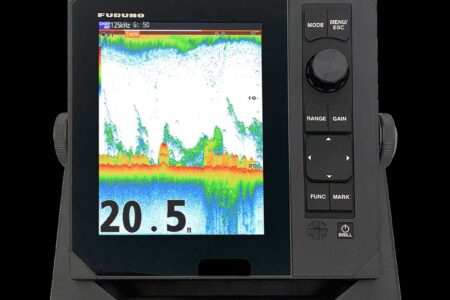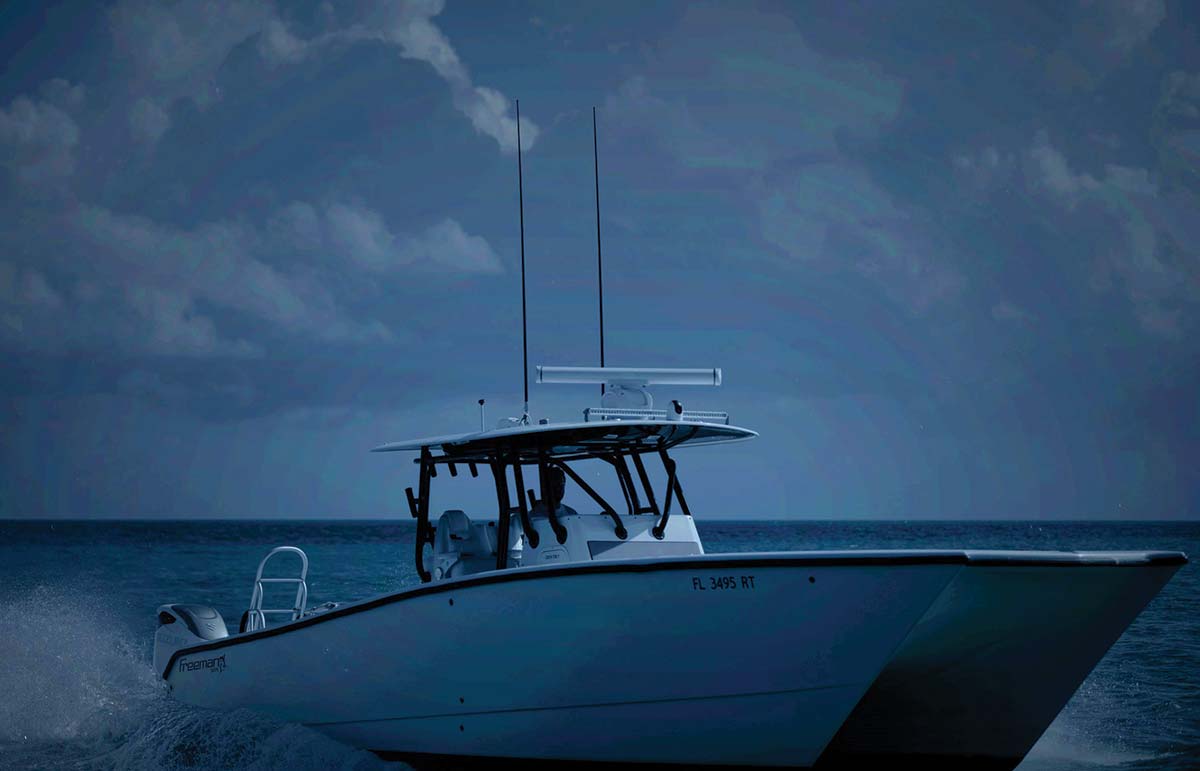
It used to be that night vision devices were once strictly the purview of the military, to keep us safe from all enemies, foreign and domestic. The mantra of “we own the night” was commonly heard from special operators from all branches of the uniformed services.
Due to its high cost and proprietary nature, there was a time when only the military industrial complex – funded by the US taxpayers of course – could afford night vision technology. But this is no longer the case. Basic analog and digital light-gathering night vision cameras and moderately priced thermal imaging devices were introduced to the marine marketplace a few years back and are now beginning to gather some headway.
As next-gen equipment is coming online, the cost of prior generation gear is being lowered to the point where the boating and fishing public can actually afford it.
Why Night Vision?
As a boater, the number one benefit of night vision is safety. Having the ability to see objects in front of you that are not visible to the naked eye, like unlighted buoys or channel markers, floating debris, stationary boats, people in the water, rocks and other obstructions, is a potential life-saver and can prevent tragic boating accidents before they can happen. For early bird anglers and/or those heading out before sunrise, or getting back late from long runs offshore, the ability to see what’s in front of you can safely extend your travel plans, which translates to more fishing time when you get to your objective. Having and using night vision or thermal gear, in conjunction with automatic identification system (AIS) receivers to account for any commercial traffic in your area while also posting a reliable watch can effectively allow you to navigate the night with an added degree of safety and self-confidence.
I reached out to the folks at SiOnyx to get an education on the differences between analog and digital light-gathering night vision technology and thermal imaging. The following explanation should provide a solid understanding of how each technology works and how it can help you navigate safely in the dark of night.
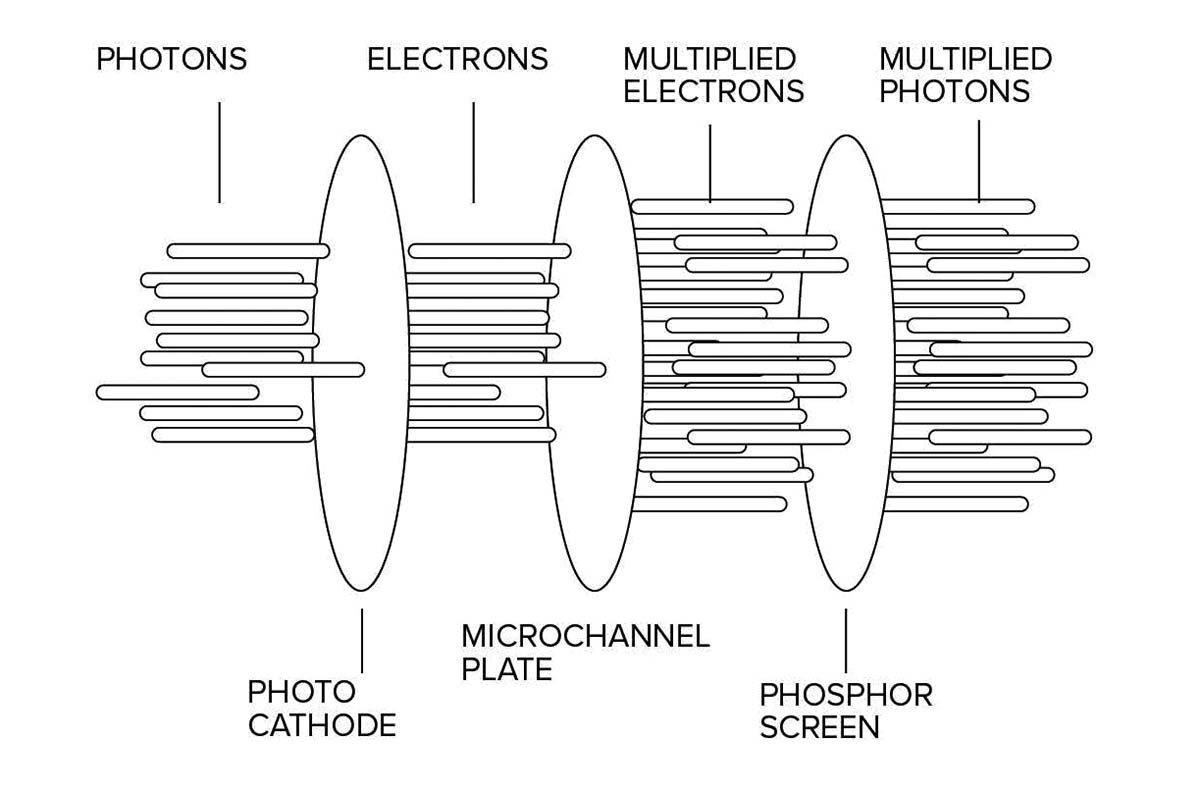
Analog Night Vision – All analog night vision devices share several main components consisting of an objective lens, an eye piece, a power supply, an image-boosting photocathode and a photomultiplier. The latter two items when combined are commonly referred to as an image intensifier tube. The real magic lies within the image intensifier tube, which absorbs photons (light energy) and releases electrons (electric energy) before converting into light again in the form of an image.
At the front of any night vision device is an objective lens, whose job is to gather all available ambient and artificial infrared energy before funneling it to an electronically powered image intensifier tube. These photons pass through a photocathode, which converts them into electrons. These electrons move onto a micro channel plate (MCP), where they are amplified by a factor of thousands through an electrical and chemical chain reaction created when they impact the micro channel walls. These effectively supercharged electrons then slam into a screen coated in phosphors where they reach an excited state, releasing photons, or visible light, which can be viewed through an eye piece.
The image will appear as a crisp amplified reaction of the scene you are observing, but in a combination of greens and blacks. Why green? The phosphor screen most commonly used produces an image that is green in color for a simple reason – the human eye is very sensitive to green tones and can distinguish more shades of green than any other color in the spectrum, thus providing a greater level of image detail to the viewer.
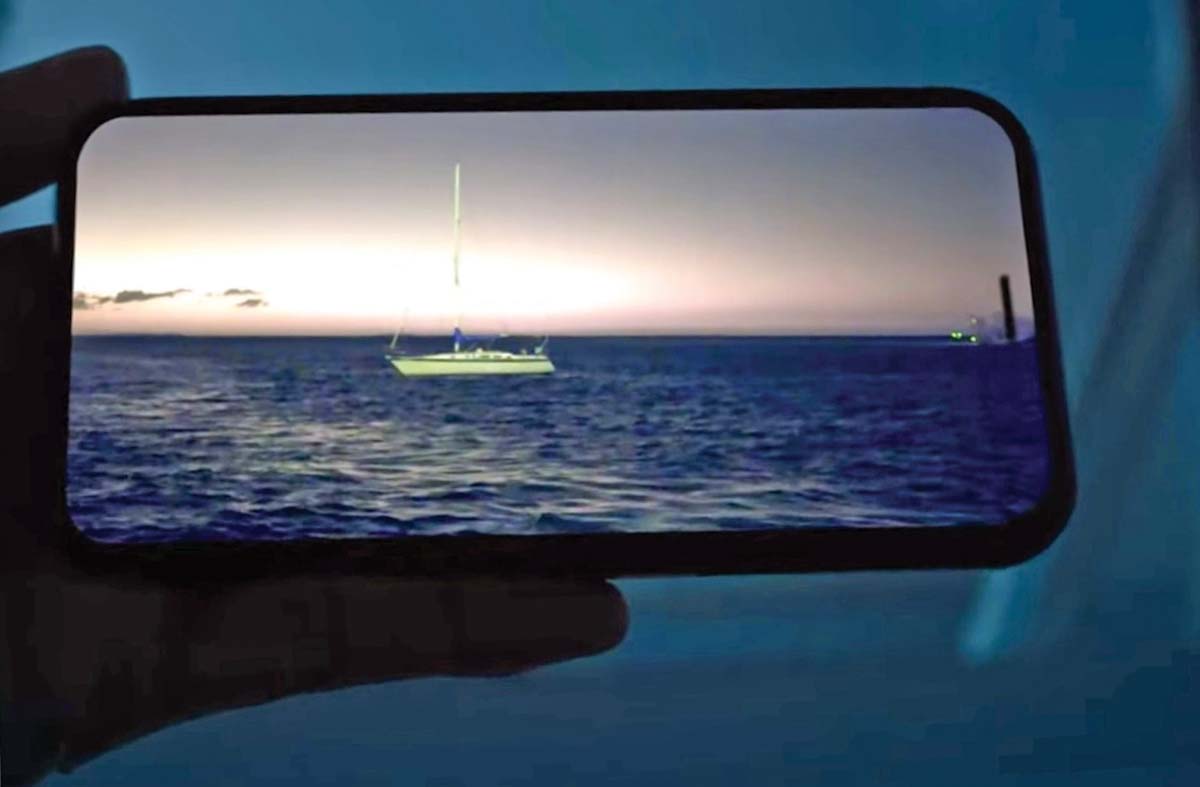
Digital Night Vision – Digital night vision devices operate differently than analog units in that light entering the objective lens is transformed into a digital signal by an image sensor of either the Complementary Metal Oxide Semiconductor (CMOS), or Charged Coupling Device (CCD) variety. These are the same technologies used in all digital cameras.
The digital image is enhanced several times before being viewable on the device’s display. The larger the CMOS or CCD sensor pixel size, the better it will perform in reduced light. SiOnyx has patented technology that enhances sensitivity to near infrared (NIR) wavelengths and therefore provides greater low light performance. Just like digital cameras, each generation of CMOS and CCD sensors produce higher quality images at a lower cost than the previous generation. The latest wave of digital night vision devices is capable of producing color imagery, while analog cannot.
Another benefit of digital night vision is its ability to overlay imagery such as icons, indicators and other valuable information. Since the optical image is being converted into a digital signal anyway, the device has the ability to record video, still images and sound, which can be easily stored onboard, on a memory card, or wirelessly transferred via WiFi to a device such as a phone or tablet. Digital night vision technology is still in its infancy and is destined for tremendous increases in performance, while analog night vision is operating at the peak of its capability.
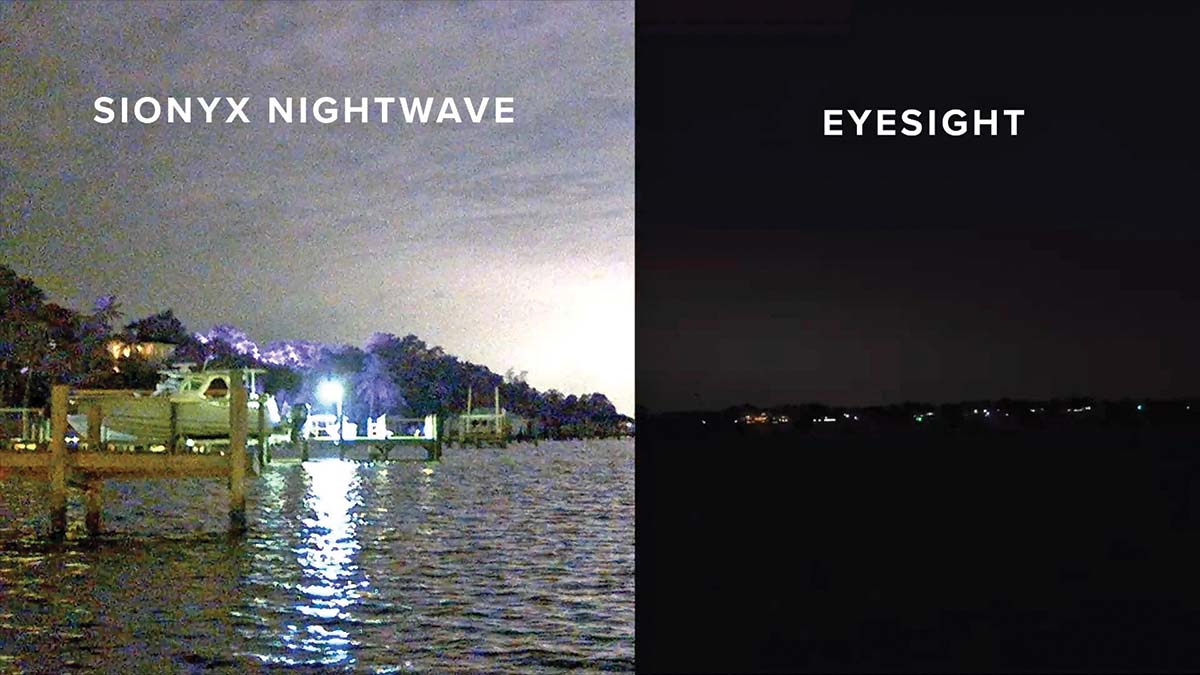
Thermal Imaging – An alternative to night vision is a thermal imager. Instead of searching for light to magnify, a thermal imager detects infrared radiation by way of microbolometers that change resistance based on their temperature. This change in resistance can be measured and converted into a viewable image by thousands of microbolometer pixels. All objects emit some level of thermal infrared light; the hotter the object is, the more radiation it emits and the more that light will change the resistance of each bolometer.
Resolution of thermal imaging is typically far behind the current night vision devices, yet target detection ranges are typically greater. The rule of thumb is the higher the resolution, the more capable the unit is and the more it is going to cost. Because the resolution is lower than analog or digital night vision devices, thermal imagers are more difficult to interpret and recognize object detail and the landscape.
Furthermore, if all objects in a given scene are at the same temperature, there is very little contrast between them. That said, thermal imagers are particularly good at showing living creatures and heat signatures from objects like cars, machinery, boats and anything else that produces heat as a by-product of its operation.
Infrared Radiation
To get an understanding of how climatic conditions that impact thermal imaging, I reached out to Teledyne/FLIR for more insight. Even in clear skies, inherent atmospheric absorption places limits on how far a particular infrared camera can see. A thermal imaging camera produces images based on the differences in thermal radiation that an object emits. The farther this infrared signal has to travel from the target to the camera, the more of that signal can be lost along the way.
This means that the attenuation factor needs to be taken into account, or the ratio of incident radiation to radiation transmitted through a shielding material. Humid air acts as a “shield” for infrared radiation, and thus summer month atmospheres usually have a higher attenuation compared to winter months due to increased humidity levels. Generally speaking, clear skies and good weather conditions during winter will allow you to see farther with a thermal imaging camera than in summer.
But humid air is just one example of how infrared radiation can be lost. There are other climatic conditions that are far more detrimental to the range of a thermal imaging camera. Fog and rain can severely limit the range of a thermal imaging system due to the scattering of light off droplets of water. The higher the density of droplets, the more the infrared signal is diminished. An important question that infrared radiation, or IR, camera users ask is how much rain or fog will limit the range performance of a thermal infrared camera, and how does this compare to the range of visible camera performance? The reason for the degradation of visibility in a foggy atmosphere is the absorption and scattering of natural or artificial illumination by fog particles. The amount of absorption and scattering depends on the microphysical structure of the fog particles, also referred to as aerosols.
Just like it is difficult to offer a simple answer to the question “How far can I see with a thermal imaging camera,” it is equally impossible to say how much shorter the range will be in foggy or rainy conditions. This is not only dependent on the atmospheric conditions and the type of fog but it is also dependent on the IR camera used and on the properties of the target (size, temperature difference of the target and background, etc.).

Fixed Mount Investment
The two basic methods to embrace night vision are to permanently install it on your vessel, or to purchase a portable handheld device to keep in a shockproof, waterproof hard plastic case like a Pelican to be ready for action on demand. One of the most popular digital night vision fixed-mount units on the market right now is the SiOnyx Nightwave which looks somewhat like a downsized R2D2 robot from the Star Wars collection. Measuring roughly 5 by 5 by 6 inches and weighing slightly less than 2 pounds the Nightwave offers digital technology with a high-resolution 1280×1024 color output, a frame rate of 30 Hz, a wide 44-degree horizontal field of view, waterproof to IP67 standards, with a focus of 10 meters to infinity and a 16mm F/1.4 lens. It also features WiFi and Bluetooth compatibility.
I have been on boats that had these installed and the digital picture is crisp, clear and colorful, not grainy like some of the lower cost thermal cameras. Under the light of a quarter moon, it can pick up a man-sized target out to 450 to 500 feet. With an MSRP under $2,000, the SiOnyx Nightwave will be a popular choice for those on a somewhat fixed marine electronics budget. Another digital night vision option is offered by Black Oak Marine with their Nitron XD camera. It features a marine grade waterproof housing and streams 752 x 582 HD video at 60 frames per second to your boat’s MFD with 20- or 30-degree field of view options. The MSRP on the Nitron XD, which boasts an IP69K waterproof rating and measures roughly 8-1/2 by 3 by 3 inches without its mount, is currently around $4,000.

If thermal imaging is your cup of tea, the biggest dog in the pound is Teledyne’s FLIR (an acronym that translates to Forward Looking Infrared), which offers numerous fixed mount options that range in cost from $3,500 to over $22,000. One of the most popular FLIR thermal camera options is the M232, which has an MSRP of $3,495. The M232 pan and tilt camera is one of FLIR’s smallest and most affordable marine thermal cameras. It features a full 320×240 resolution for optimal horizon-to-horizon viewing, a 9Hz screen refresh rate, IPX6 waterproof rating and a 4X continuous e-zoom, improving boating safety by revealing unseen vessels and obstacles at night. Boaters can enjoy 360-degree viewing while underway with the easy pan and tilt feature, which is a huge game changer when looking for navigation aids in the dark.
Combine the M232 with a Raymarine Axiom MFD and take advantage of FLIR ClearCruise intelligent thermal analytics which provides both audible and visual alerts when “non-water” objects such as boats, obstacles, or navigation markers suddenly appear in the field of view. The FLIR when used with ClearCruise greatly increases the operator’s situational awareness in the dark of night. This FLIR thermal camera can detect a human target at 0.3 nautical miles (560m) and a 30-foot boat at 1.0 nautical mile (1,850m) and is the best tool in the toolbox for quickly locating a man overboard in low light.
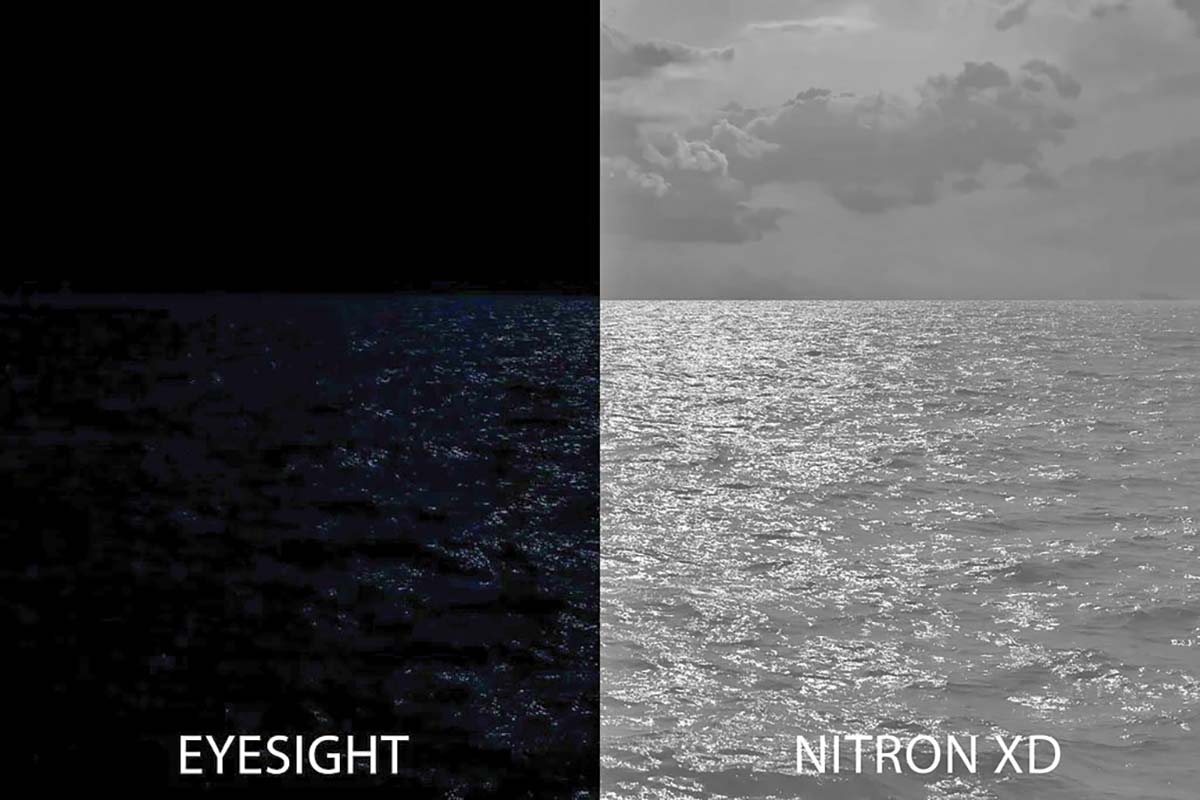
Portable Options
If a fixed mount night vision camera is not in the cards, there are currently a trio of attractive and lower-priced handheld options that deserve a second look. The first is the SiOnyx Aurora Pro, which their flagship full color digital night vision monocular optic. The Pro is their latest development with both new sensor technology and enhanced optics giving the viewer the most advanced digital night vision capabilities. The Pro performs best in the darkest conditions and it’s designed with extreme environments in mind. It has all of the great recording and streaming functionality as the rest of the Aurora line, but with 256GB of internal memory.
The SiOnyx Aurora Pro features an IP67 waterproof rating and features GPS, compass and accelerometer that can stream via WiFi to a smart device via the SiOnyx mobile app. It offers 1024×768 resolution, 1X-3X digital magnification, -4 to +4 diopter adjustment for crystal clear images, two-hour battery life, a focus range from 10 feet to infinity, generous eye relief from 7.5 to 20mm and weighs less than 2 pounds. The price for the Aurora Pro is under $1,000 and considerably so if you can get it on sale.
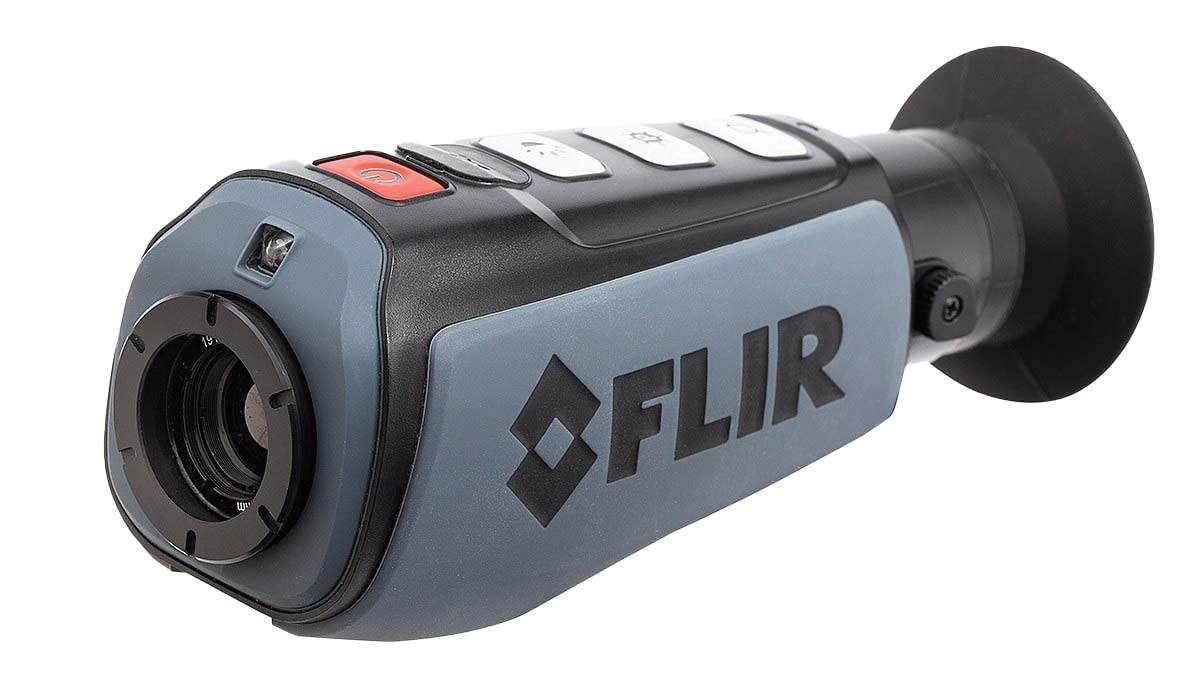
FLIR offers a pair of handheld thermal camera options, the Ocean Scout 320 and 640. These share a very similar feature set that includes white hot or black hot image polarity, an IP67 waterproof rating, an adjustable brightness setting, plus a comfortable weight of only 12 ounces. The internal Li-ion battery cell offer over 5 hours of operating time and like their bigger sister, the M232 fixed mount thermal unit, the 320 and 640 Ocean Scouts can pick up a man-sized target from 1,800 feet and a 30-foot vessel from over 5,000 feet away.
The biggest difference is that the model 640 features both a 2X and 4X zoom, 18-degree by 14-degree field of view and 640×512 thermal resolution. The Ocean Scout 320 is limited to a 2X zoom, 17-degree by 13-degree field of view and a 336×256 thermal resolution. Both monoculars measure about 7 inches in length by 2-1/2 inches around, and provide a 642×480 LCD display. The Ocean Scout 320 is available for $1,795, while the 640 model costs $2,395.

Honorable Mention – Radar
Radar (radio detection and ranging) is yet another technology that offers a modified night vision capability. It works in limited light conditions, day or night, in clear or foggy weather. It will indicate objects around you at different ranges near and far like boats, buoys, channel markers, land masses, inlets, etc., plus velocity tracks of objects moving both towards you and away from you. However, you need to have your unit fine-tuned to capture all of these readings, with the ability to interpret what all of the moving objects mean with the ability to act instantly on this information.
Operators can zoom their radar screens in and out at the touch of a button depending on the needs of the moment. Basic 2kW radar sets with 18-inch radomes that plug and play seamlessly into your onboard MFD (multi-function display) can be purchased for under $2,000, not including radome mounting hardware and installation, so this is definitely an affordable option for some of your low visibility and nighttime boating transits.
So how does one technology compare to another when looked at side by side? I was able to find an interesting Aussie website (streakermarine.au) where a boat dealer actually mounted a trio of big screen Simrad MFDs enabling the viewer to observe each technology (Sionyx Digital Night Vision, Teledyne FLIR and Simrad Halo Radar) looking at identical objects in a large, crowded marina. The results were intriguing and each technology had its plusses and minuses. But for affordability, the boat dealer opined that for the money, the Sionyx Nightwave digital night vison camera offered a lot of bang for the buck, an assessment that I would concur.
When you look at the initial invest cost of a fixed mount unit (less than $2,000) and the ease of installation with its plug-and-play capability, it’s hard to find a more affordable option in today’s marketplace.
Of course, getting stuck in a fog bank renders this digital night vision technology practically useless, hence the radar option as a viable alternate in a pinch. Lots of options, the decision is yours to make.



